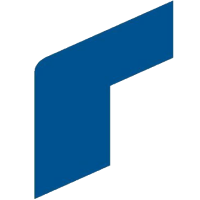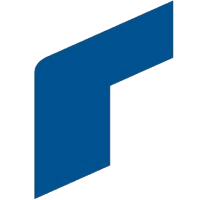
Rheinmetall AG
XETRA:RHM


| US |

|
Johnson & Johnson
NYSE:JNJ
|
Pharmaceuticals
|
| US |

|
Berkshire Hathaway Inc
NYSE:BRK.A
|
Financial Services
|
| US |

|
Bank of America Corp
NYSE:BAC
|
Banking
|
| US |

|
Mastercard Inc
NYSE:MA
|
Technology
|
| US |

|
UnitedHealth Group Inc
NYSE:UNH
|
Health Care
|
| US |

|
Exxon Mobil Corp
NYSE:XOM
|
Energy
|
| US |

|
Pfizer Inc
NYSE:PFE
|
Pharmaceuticals
|
| US |

|
Palantir Technologies Inc
NYSE:PLTR
|
Technology
|
| US |

|
Nike Inc
NYSE:NKE
|
Textiles, Apparel & Luxury Goods
|
| US |

|
Visa Inc
NYSE:V
|
Technology
|
| CN |

|
Alibaba Group Holding Ltd
NYSE:BABA
|
Retail
|
| US |

|
JPMorgan Chase & Co
NYSE:JPM
|
Banking
|
| US |

|
Coca-Cola Co
NYSE:KO
|
Beverages
|
| US |

|
Walmart Inc
NYSE:WMT
|
Retail
|
| US |

|
Verizon Communications Inc
NYSE:VZ
|
Telecommunication
|
| US |

|
Chevron Corp
NYSE:CVX
|
Energy
|
Utilize notes to systematically review your investment decisions. By reflecting on past outcomes, you can discern effective strategies and identify those that underperformed. This continuous feedback loop enables you to adapt and refine your approach, optimizing for future success.
Each note serves as a learning point, offering insights into your decision-making processes. Over time, you'll accumulate a personalized database of knowledge, enhancing your ability to make informed decisions quickly and effectively.
With a comprehensive record of your investment history at your fingertips, you can compare current opportunities against past experiences. This not only bolsters your confidence but also ensures that each decision is grounded in a well-documented rationale.
Do you really want to delete this note?
This action cannot be undone.

| 52 Week Range |
604
1 988.5
|
| Price Target |
|
We'll email you a reminder when the closing price reaches EUR.
Choose the stock you wish to monitor with a price alert.

|
Johnson & Johnson
NYSE:JNJ
|
US |

|
Berkshire Hathaway Inc
NYSE:BRK.A
|
US |

|
Bank of America Corp
NYSE:BAC
|
US |

|
Mastercard Inc
NYSE:MA
|
US |

|
UnitedHealth Group Inc
NYSE:UNH
|
US |

|
Exxon Mobil Corp
NYSE:XOM
|
US |

|
Pfizer Inc
NYSE:PFE
|
US |

|
Palantir Technologies Inc
NYSE:PLTR
|
US |

|
Nike Inc
NYSE:NKE
|
US |

|
Visa Inc
NYSE:V
|
US |

|
Alibaba Group Holding Ltd
NYSE:BABA
|
CN |

|
JPMorgan Chase & Co
NYSE:JPM
|
US |

|
Coca-Cola Co
NYSE:KO
|
US |

|
Walmart Inc
NYSE:WMT
|
US |

|
Verizon Communications Inc
NYSE:VZ
|
US |

|
Chevron Corp
NYSE:CVX
|
US |
This alert will be permanently deleted.
Rheinmetall AG
Rheinmetall AG, a stalwart of the German industrial landscape, paints a compelling tableau of adaptability and precision engineering. Founded in 1889, the company began its journey crafting armor for the rapid industrialization that swept across Europe. Today, it sits at the forefront of the automotive and defense industries, ingeniously balancing the dual threads of its business. On one side, the defense division thrives in an era of geopolitical uncertainty, producing advanced technologies ranging from military vehicles to sophisticated weapon systems and sensors. This arm of the business capitalizes on the increasing defense budgets worldwide, ensuring Rheinmetall maintains a robust position in global military contracts.
Parallelly, Rheinmetall’s automotive sector embraces the evolution of mobility, driving innovation in engine efficiency and emissions reduction systems. This division is pivotal in the era of regulation-heavy automotive markets, such as those in the European Union, aiming for heightened environmental standards. By supplying components that promote cleaner, more efficient engines, Rheinmetall taps into the automotive industry's inexorable march toward sustainability. Together, these two complementary sectors enable Rheinmetall to craft a resilient narrative of growth and adaptability, illustrating how a company deeply rooted in its industrial origins can thrive by aligning itself with both the pragmatic demands of today and the technological innovations of tomorrow.

Rheinmetall AG, a stalwart of the German industrial landscape, paints a compelling tableau of adaptability and precision engineering. Founded in 1889, the company began its journey crafting armor for the rapid industrialization that swept across Europe. Today, it sits at the forefront of the automotive and defense industries, ingeniously balancing the dual threads of its business. On one side, the defense division thrives in an era of geopolitical uncertainty, producing advanced technologies ranging from military vehicles to sophisticated weapon systems and sensors. This arm of the business capitalizes on the increasing defense budgets worldwide, ensuring Rheinmetall maintains a robust position in global military contracts.
Parallelly, Rheinmetall’s automotive sector embraces the evolution of mobility, driving innovation in engine efficiency and emissions reduction systems. This division is pivotal in the era of regulation-heavy automotive markets, such as those in the European Union, aiming for heightened environmental standards. By supplying components that promote cleaner, more efficient engines, Rheinmetall taps into the automotive industry's inexorable march toward sustainability. Together, these two complementary sectors enable Rheinmetall to craft a resilient narrative of growth and adaptability, illustrating how a company deeply rooted in its industrial origins can thrive by aligning itself with both the pragmatic demands of today and the technological innovations of tomorrow.
Strong Defence Growth: Defence sales rose 17% year-over-year to EUR 2.3 billion, making up 83% of total sales.
Sales & Margin: Total Q3 sales reached EUR 2.8 billion, up 13%, with a group operating margin of 12.9% and Defence margin of 15.7%.
Backlog Expansion: Order backlog jumped 23% year-over-year to EUR 63.8 billion, supporting confidence in future growth.
Operating Free Cash Flow: Operating free cash flow was negative at minus EUR 168 million in Q3, impacted by inventory build-up and delayed order intake but expected to recover with new contracts and down payments.
Guidance Confirmed: Management remains confident in full-year guidance, expecting Defence sales to grow 35-40% and operating margin around 15.5%.
Major Contracts & Outlook: Significant contract opportunities are expected in Q4 and early 2026, especially from the German government and other European partners, potentially lifting order intake to around EUR 80 billion.
M&A and Partnerships: The company is progressing with the naval business acquisition and several international joint ventures, and remains open to further M&A, especially in digitization and Defence.































